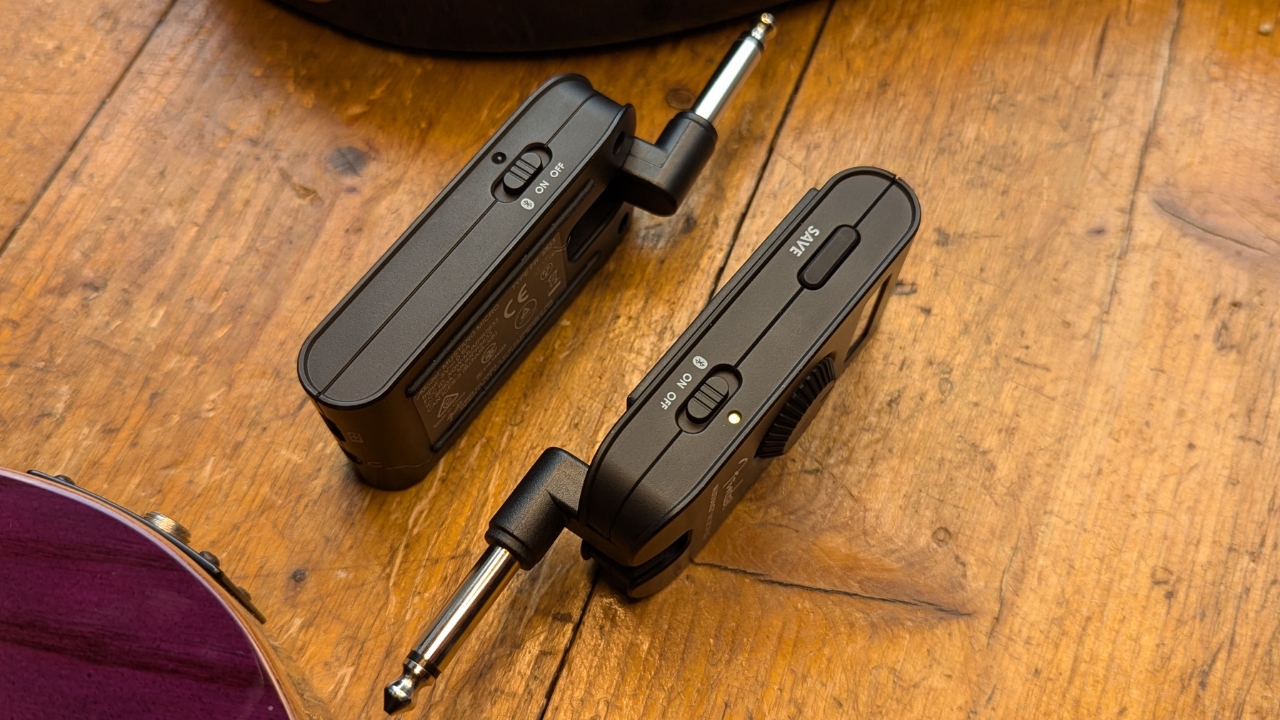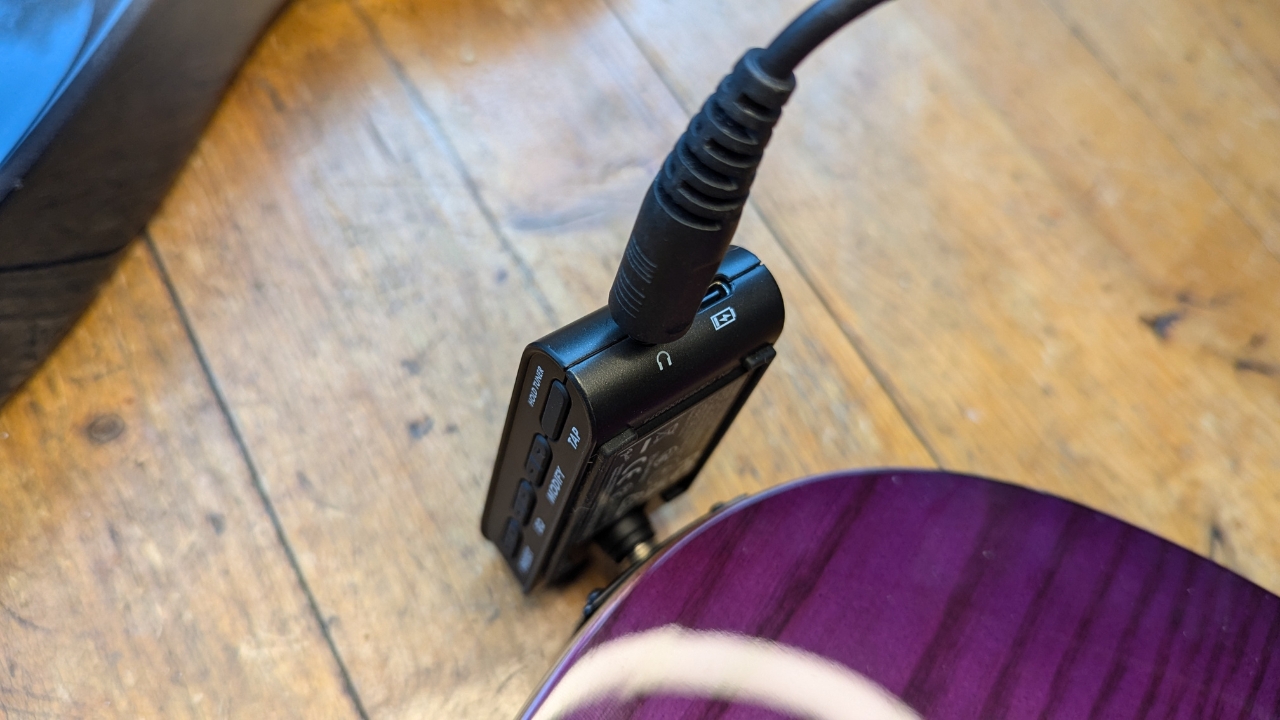Fender Mustang Micro vs Mustang Micro Plus: is it worth upgrading?
We put Fender’s two headphone amps for guitar in a room together to duke it out

Headphone amps for guitar are an awesome way to practice, providing a low-maintenance, small, and lightweight way to produce your guitar tones. Over the last few years I've been using my Mustang Micro for late-night writing sessions, as well as taking it with me when I travel for work, giving me the opportunity to keep my skills sharp whenever I get some downtime on the road.
I'm a huge fan of modeling amp tech, and following the recent release of the Mustang Micro Plus, I was given the latest version of Fender's tiny tone machine to review for Guitar World. Having had my hands on both, it made sense that my next job would be to determine which was superior, and whether it’s worth upgrading for existing Mustang Micro users.
In this article I'll put both units side by side, comparing them against one another across a variety of categories to work out where each is superior. This isn't just a case of comparing specs either, I've physically had them both in the same space, testing them to their fullest extent to help you make the right decision. Let's see how they stack up...
Fender Mustang Micro vs Mustang Micro Plus: At a glance
Let’s start by putting the two head to head in terms of specifications, so you can see how each compares:
Fender Mustang Micro
- Fender Mustang Micro review
- Price: $119/£90
- Amps: 12
- Effects: 12
- Connectivity: 1/8” jack, USB-C
- Contact: Fender
Fender Mustang Micro Plus
- Fender Mustang Micro Plus review
- Price: $149.99/£149
- Amps: 25
- Effects: 25
- Connectivity: 1/8” jack, USB-C
- Contact: Fender
Fender Mustang Micro vs Mustang Micro Plus: Build & features

Both units look incredibly similar at first glance but when you put them next to one another, there’s a glaring difference. The Mustang Micro Plus has done a full 180 in terms of design, so that the writing isn’t upside down when you look at it plugged into the guitar. This, along with the new LCD screen marks two major changes from the original, but aside from that the styling is very similar.
Both units feature a large rotary knob on the front for adjusting the master volume, and both have a foldable 1/4-inch jack that allows for fitment into a variety of different guitars. The color and text designs are exactly the same, although the Plus does have a slightly more robust rubber grip on the back side.

Moving to the buttons things are slightly different again. The Mustang Micro features a single slider button for power and connecting via Bluetooth on its right hand side. The Mustang Micro Plus has the same button, but adds in a save button for its new saveable presets feature - more on which later.
All the latest guitar news, interviews, lessons, reviews, deals and more, direct to your inbox!
On the opposite side the same four, dual button layout is kept, but the functions they perform have changed. On the Mustang Micro the controls are for selecting your amp preset, selecting an EQ preset, changing the effect on the preset, and the modify button which changes the amount of effect you hear.

On the Mustang Micro Plus this has changed to a preset button, an EQ preset button, a modify button which again changes the mix of a chosen effect, and a tap tempo button which can be held to access the onboard tuner. These changes are part of a wider format change for the Micro Plus, which includes a dedicated app.
Winner - The Mustang Micro Plus just about takes this one for me. On the face of it, these are incredibly similar-looking and functioning bits of kit, but the addition of a screen on the Micro Plus makes it ever so slightly more refined than its predecessor.
Fender Mustang Micro vs Mustang Micro Plus: Usability

The original Mustang Micro had a very obtuse way of operating. Rather than specific presets you were able to switch between amp models, which ranged from classic Fender Twin to ultra-high gain models based on the EVH 5150. Each amp model had its own color light assigned to the amp button, so you either had to remember 12 different colors or, as I did, use the handy guide card that came in the pack and prop it up somewhere for reference.
Once you selected your amplifier you could then select 5 different EQ settings from dark to flat, and then up to bright, which was useful for using different types of guitar pickups. The effects selector operated in similar fashion to the amp selector, giving you a range of reverbs, delays, and choruses to choose from, and allowing you to change a particular parameter using the modify button.
Everything operated independently of one another, so if you changed the amp model the effect would stay the same, and vice versa. It makes the Mustang Micro quite static in its approach to sounds, and to be totally honest having all the different shades of color for different settings, it was pretty much impossible to commit them all to memory. I’d rely on cycling through til I found a particular sound, adjusting it to the guitar I was using that day, and then having to do the same thing all over again when I next picked it up.

The Mustang Micro Plus on the other hand has gotten all smart on us, and now includes a dedicated app as part of its workflow. It’s a complete game changer, doing away with the at times indecipherable color code system of the original, and completely changing the way you use it. The app allows you to finely tune your whole rig whether that’s specific amp EQ and effects settings, all the way through to chains of multiple effects.
Conversely, this means you don’t get the full functionality through the controls alone. But as most people have a smartphone these days, unless you’re rocking an old Nokia for extra luddite points, you’re going to be able to use it the way it was intended. The modify button can be assigned to whichever effect parameter you like, and I found the app overall to be really smooth and fast when I was testing it, with a brilliantly designed UI.

The addition of an onboard tuner alongside the built-in screen is another feather in the cap of the Mustang Micro Plus, giving you the option to quickly tune up without using a clip-on tuner or an app on your phone. Being able to save and switch between presets completely changes the way you use the Mustang Micro too, offering a marked improvement over the original in terms of functionality.
Winner - this is an easy win for the Mustang Micro Plus. The addition of an app and presets make it a far more usable practice tool, and allow you to really get the most out of your tones without having to endlessly cycle through hardware buttons.
Fender Mustang Micro vs Mustang Micro Plus: Sounds

The Mustang Micro sounded good, but there were definitely a few duff tones on there. I quickly found my favorites like the ‘65 Deluxe for my cleans or Marshall Super Lead tone for rhythm playing. To be honest I could take or leave some of the other sounds on it. The effects were a much better proposition, especially the stereo delay and reverbs which sounded wonderful through a pair of headphones.
By contrast, the Mustang Micro Plus is a far more refined product in terms of tones, offering huge flexibility and a much more realistic sound. Taking a leaf out of the larger Mustang amp collection it’s got more amps, and they sound miles better. There’s much more nuance to the different amp models compared to the original and the effects are much higher quality too. You now get a full selection of drive pedals to choose from, alongside a fairly comprehensive selection of effects.

I was happy with the sound of my Mustang Micro even if I didn’t use some of the models, but I'm also conscious that sound is an incredibly subjective thing. Other users may have felt the sound quality was perfectly usable for what is essentially a compact practice amp. That said, to my ear the Mustang Micro Plus really does deliver much more articulation and detail in its tones, feeling, and sounding much more realistic than its predecessor.
Winner - Another win for the Mustang Micro Plus, although it’s a little bit closer here. Although the quality of sound is really in the ear of the user, ultimately the Micro Plus has more sounds and more ways to tweak them, making it a far more versatile proposition than the original.
Fender Mustang Micro vs Mustang Micro Plus: Final verdict

I’ve written a lot of versus pieces and most are pretty close calls, but this was an utterly one-sided battle. The Fender Mustang Micro Plus steamrolls the original Mustang Micro in pretty much every department, building perfectly on the platform it set when it launched in 2021. It sounds better, it's easier to use thanks to the app, and the design has been improved, making it easier to use when it's plugged into your guitar's input.
I still love my original Mustang Micro, but it's unfortunately now been superseded by the Micro Plus whenever I need something compact to practice with. Pretty much the only reason you’d need to go for the original is if it's a cost-based decision. At around $/£30 more, the Plus might only be marginally more expensive, but that can still make a difference if budget is your ultimate concern.
If you're saving money or want to put your budget somewhere else, get the original Mustang Micro. If you can spend the extra cash, then the Mustang Micro Plus is one of the best headphone amps for electric guitar I’ve ever used, and well worth the asking price.

Matt is a Junior Deals Writer here at Guitar World. He regularly tests and reviews music gear with a focus on guitars, amps, pedals, modelers, and pretty much anything else guitar-related. Matt worked in music retail for 5 years at Dawsons Music and Northwest Guitars and has written for various music sites including MusicRadar, Guitar Player, Guitar.com, Ultimate Guitar, and Thomann’s t.blog. A regularly gigging guitarist with over 20 years of experience playing live and writing and recording in bands, he's performed everything from jazz to djent, gigging all over the country in more dingy venues than you can shake a drop-tuned guitar at.
